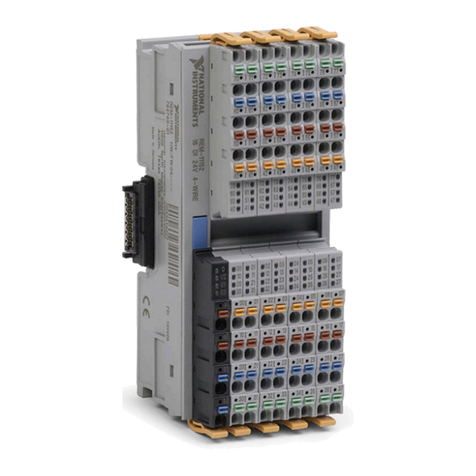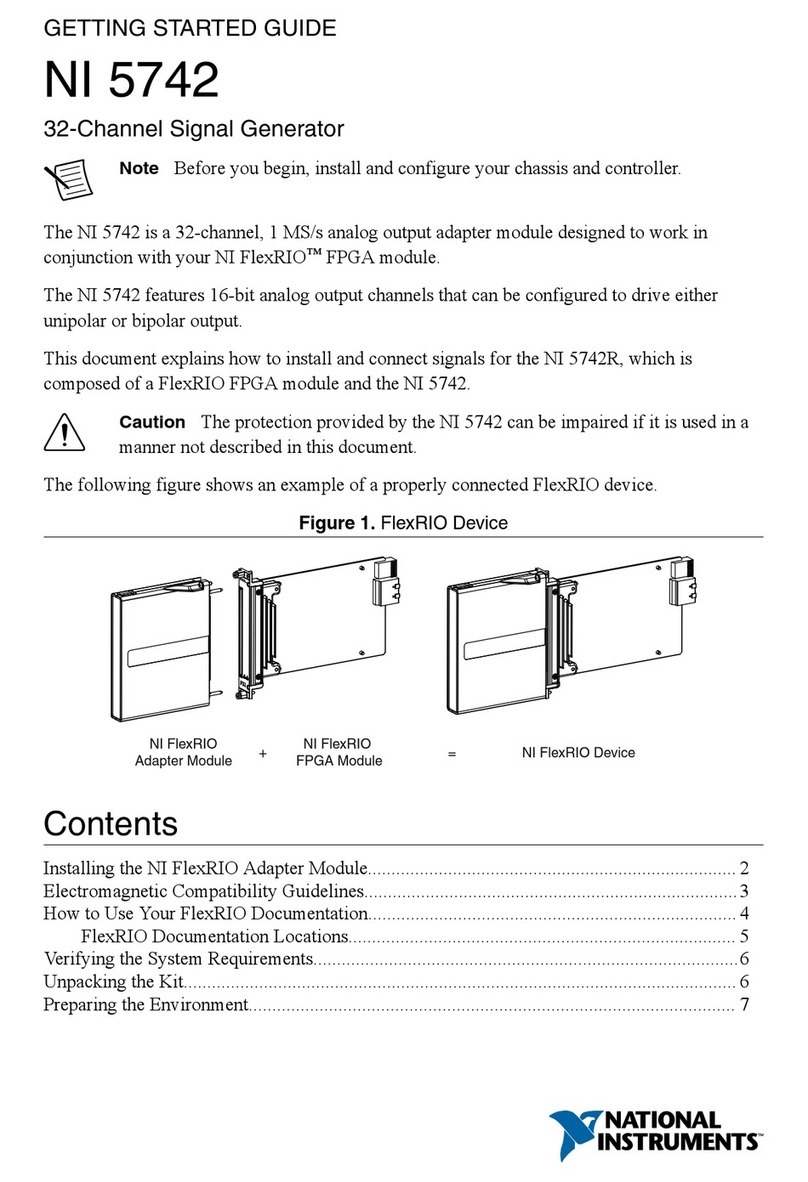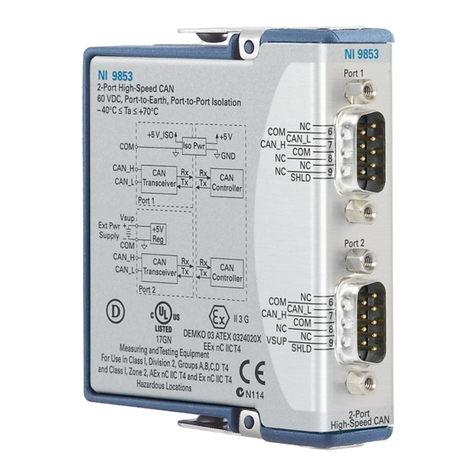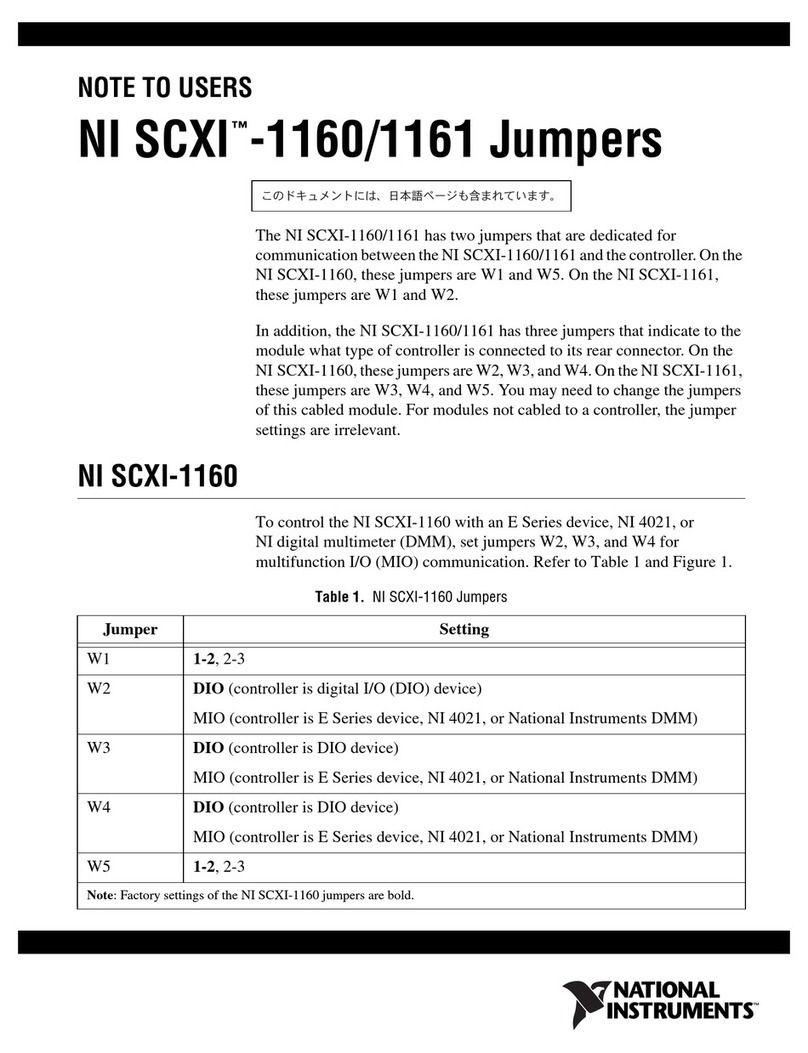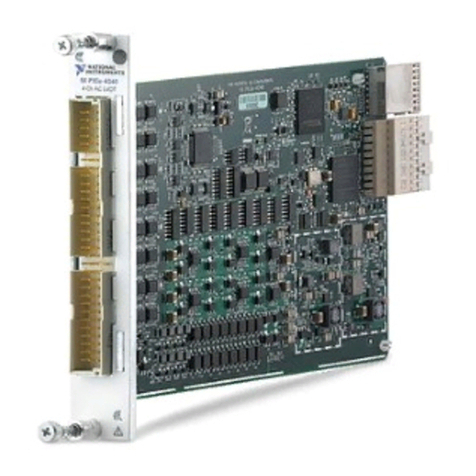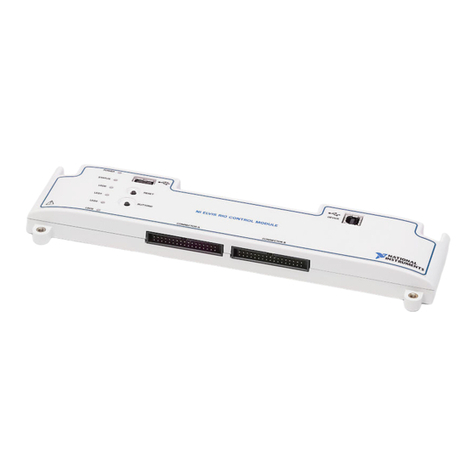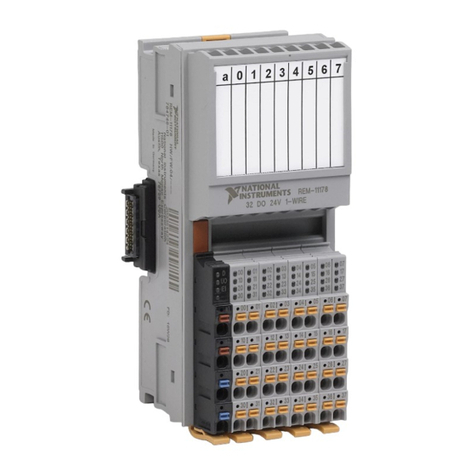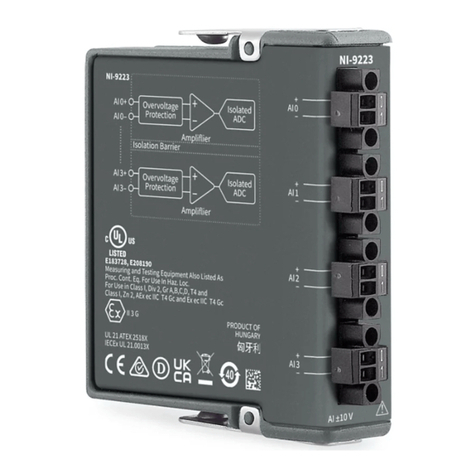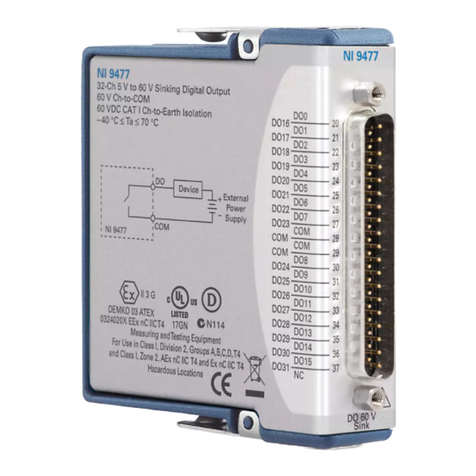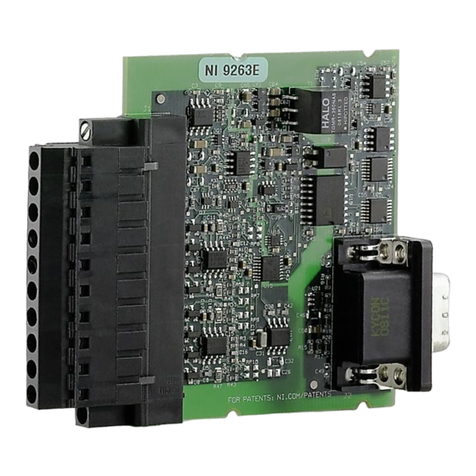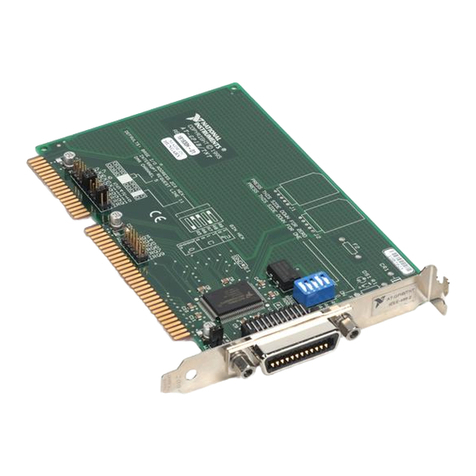
2|ni.com |NI PXIe-8383mc Getting Started Guide
Related Documentation
The following documents contain information that you might find helpful as you read this manual:
• Your computer or chassis documentation
•MXI-Express Gen II x8 User Manual available on the ni.com website
•NI-PXImc™Help file included with NI-PXImc driver
•PXI Express Hardware Specification, Revision 2.0
• PXI-6 PXI Express Software Specification
• PICMG CompactPCI Express EXP.0 R1.0 Specification
•PCI Express Specification, Revision 2.0
• PCI Express External Cabling 2.0 Specification
•PXI MultiComputing Hardware Specification, Revision 1.0
•PXI MultiComputing Software Specification, Revision 1.0
Conventions
The following conventions appear in this manual:
CompactPCI Express/ The terms CompactPCI Express and CPCIe are interchangeable in this
CPCIe guide.
MXI-Express A NI PCIe-8381, NI PXIe-8381, NI PXIe-8384, or NI PXIe-8383mc
Gen II x8 product board.
PCI Express/PCIe The terms PCI Express and PCIe are interchangeable in this guide.
PXI Express chassis In this manual, whenever a PXI Express chassis is referenced,
a CompactPCI Express chassis could be used instead.
PXI Express/PXIe The terms PXI Express and PXIe are interchangeable in this guide.
Electromagnetic Compatibility Guidelines
This product was tested and complies with the regulatory requirements and limits for
electromagnetic compatibility (EMC) stated in the product specifications. These requirements
and limits provide reasonable protection against harmful interference when the product is
operated in the intended operational electromagnetic environment.
This product is intended for use in industrial locations. However, harmful interference may
occur in some installations, when the product is connected to a peripheral device or test object,
or if the product is used in residential or commercial areas. To minimize interference with radio
and television reception and prevent unacceptable performance degradation, install and use this
product in strict accordance with the instructions in the product documentation.














